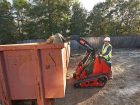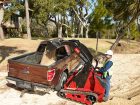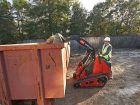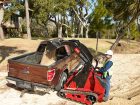
Small but mighty
By Sean O’Halloran The Toro Company
Features Tech tipsThe compact utility loader (CUL) is essentially the construction equipment equivalent of a Swiss army knife, making it an extremely attractive option for your customers on a job site or DIY home project.
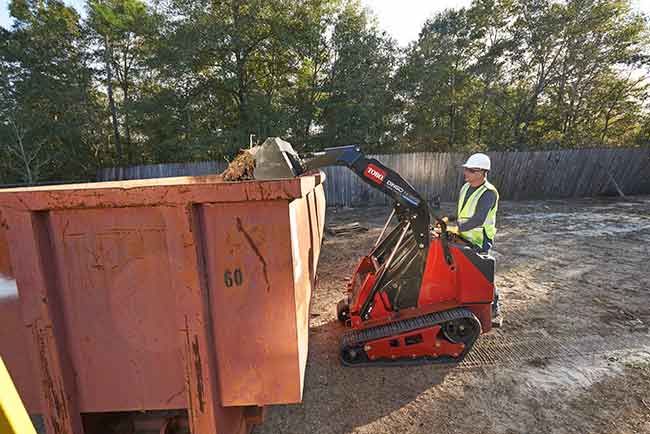
The compact utility loader is a multi-purpose machine that can use a variety of attachments to tackle a range of landscape and construction applications. Ask any contractor, and they will tell you that they without a doubt appreciate a machine that can do the job of many workers out in the field.
The first compact utility loaders began entering the North American market almost two decades ago, and since that time, contractors have been realizing the tremendous potential for these machines because they can maximize manpower, increase efficiency, manoeuver in tight spaces, and handle a number of applications, thanks to the broad range of attachments.
Weighing the options
If you’re considering offering compact
utility loaders to your customers, make certain to evaluate your equipment options. Many factors should weigh into the selection decision, with the three most critical being ease of operation, versatility of attachments and after-sale support. These factors are of the utmost importance to your customers, and should be high on your list as well.
Many rental customers are faced with the decision of renting either a compact utility loader or their beefier cousin, the skid steer loader. Each application warrants different tools, and it is up to the contractor or homeowner to decide which piece of equipment best fits the need of the job. It’s your job to make sure you can offer an excellent equipment solution for any application. That being said, on jobsites where space is at a premium, a customer may opt for the more streamlined frame and increased manoeuverability that a compact utility loader can provide. Depending on the jobsite, a full-sized skid steer loader may be too large to carry out the functions of the job efficiently. Furthermore, increasing lift capacities of compact utility loaders — like the 1,075-rated operating capacity on the new Toro TX 1000 — also give customers the ability to do more with a CUL than ever before, increasing the overall versatility of this kind of machine.
Keeping it simple
When comparing CULs, ease of operation is an important factor to consider and something that your customers factor in to every equipment decision. It is important for you and your customers to remember that numerous operators with a variety of skill levels may be operating jobsite equipment and even a novice operator should be able to understand the basic operation quickly. Furthermore, easy-to-understand controls create workers who are more productive and allow homeowners to quickly become comfortable operating the equipment. With a variety of control options on the market, the best advice is to choose something that is well-labelled and designed, easy to understand and offers a comfortable and familiar feel to the operator.
Most wheeled units feature a control system of valves similar to that of a typical skid steer. Though not as simple as the T-bar system found on some tracked models, the
valves provide
familiar operation to those accustomed to using a skid steer. The five valves manipulate the wheels, provide zero-turn capabilities and control the lift and tilt of the attachment and base plate. An auxiliary handle controls hydraulic attachments. These controls allow the user to regulate and direct the hydraulic flow and enable optimum operation for attachments such as augers and trenchers.
Versatility is key
It can be said that a compact utility loader is only as good as its attachments. When selecting equipment to rent, consider the features of the base unit but also the manufacturer’s breadth of attachments and their potential. Generally speaking, the most popular attachments are high torque earth augers, trenchers, soil cultivators, and hydraulic breakers. For instance, Toro carries more than 35 attachments, which allows the Dingo compact utility loader to perform big-machine applications like grading soil or carrying large amounts of material. Even though the hauling capacity of this compact utility loader is less than a skid steer, the bucket attachment allows it to serve, secondarily, as a material-handling machine.
Manufacturer support
Performance, flexibility and versatility are key, but your equipment is only as good as the support you receive after the sale. Look for companies that offer rental stores well-stocked parts inventories to help ensure speedy response to any need. Many manufacturers now make ordering easy with sophisticated online sites, offering product and parts drawings, price and availability lists and the ability to check order status and history. Rental customers should be able to purchase all the parts they need through the online portal.
Compact utility loaders can potentially provide the opportunity to expand your rental business, and deliver outstanding equipment solutions for your customers. By carefully exploring your options and your customers’ product needs, you can provide a new equipment line to complement any existing product offering and seriously boost both your bottom line as well as your customers’ bottom lines.
Print this page
